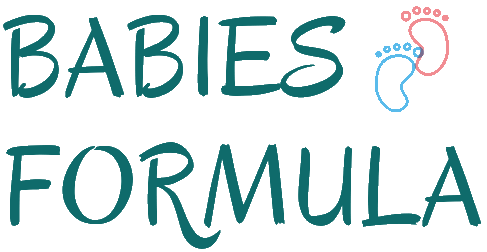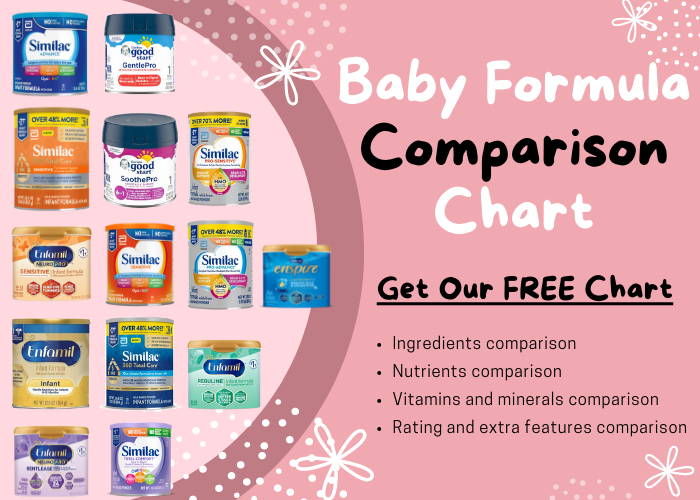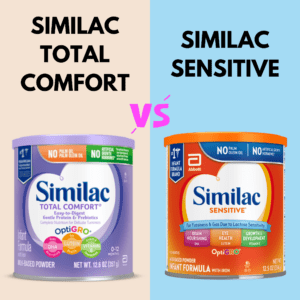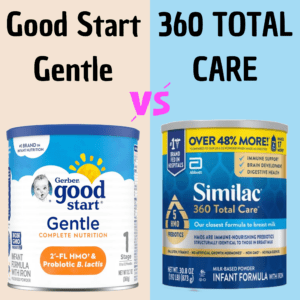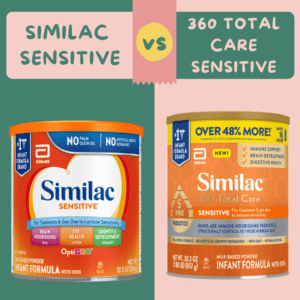Key Differences:
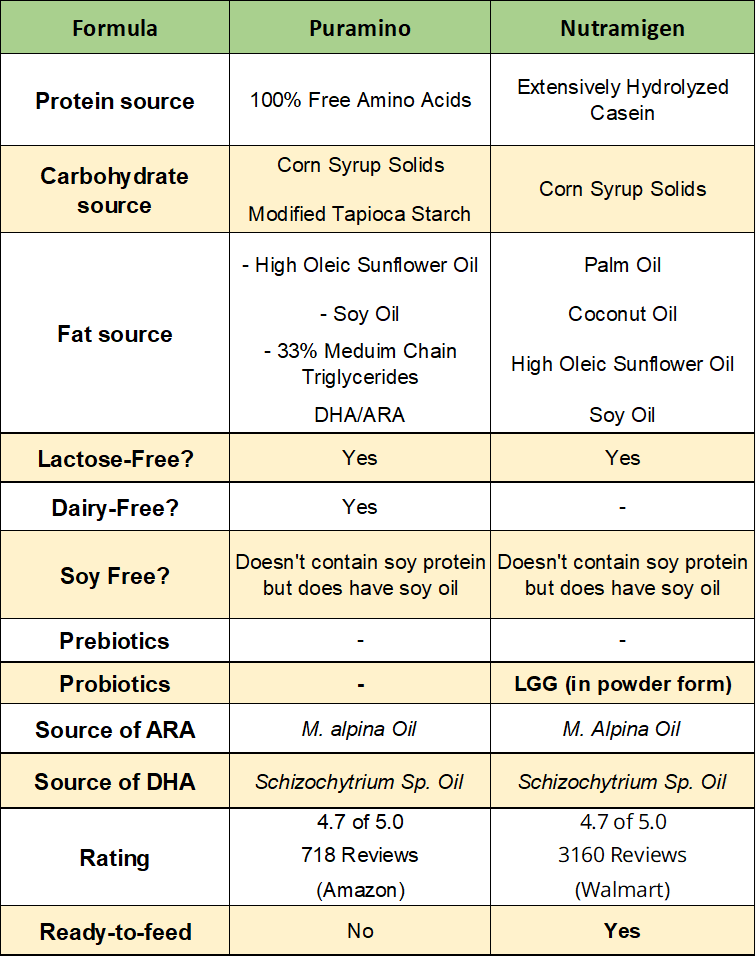
The Best One?
The determination of the “best” formula, whether it’s Puramino or Nutramigen, relies on the baby’s individual needs, preferences, and existing health conditions. Each baby is unique, and what may work well for one may not be suitable for another:
For babies with mild to moderate allergies like gas, reflux, fussiness, constipation, and colic, Nutramigen is often the first formula to consider. It is extensively hydrolyzed and generally more cost-effective compared to Puramino.
On the other hand, Puramino shows effectiveness in relieving blood in stools, gas, reflux, and colic that standard hypoallergenic formulas cannot address, or for those with dairy, soy, and lactose allergies. Puramino is considered the last resort due to its significantly higher cost compared to other formulas.
“When you buy something using my links, I may earn a small commission at no additional cost to you. This is a kind of support to me. This website doesn’t accept money for reviews. “
Mom’s Reviews Comparison:
Nutramigen and Puramino are both made by Enfamil brand. The difference between them is that Nutramigen is a hypoallergenic formula that has an extensively hydrolyzed protein whereas Puramino is an amino acid formula made for babies who have severe allergies and who can’t tolerate hypoallergenic formulas.
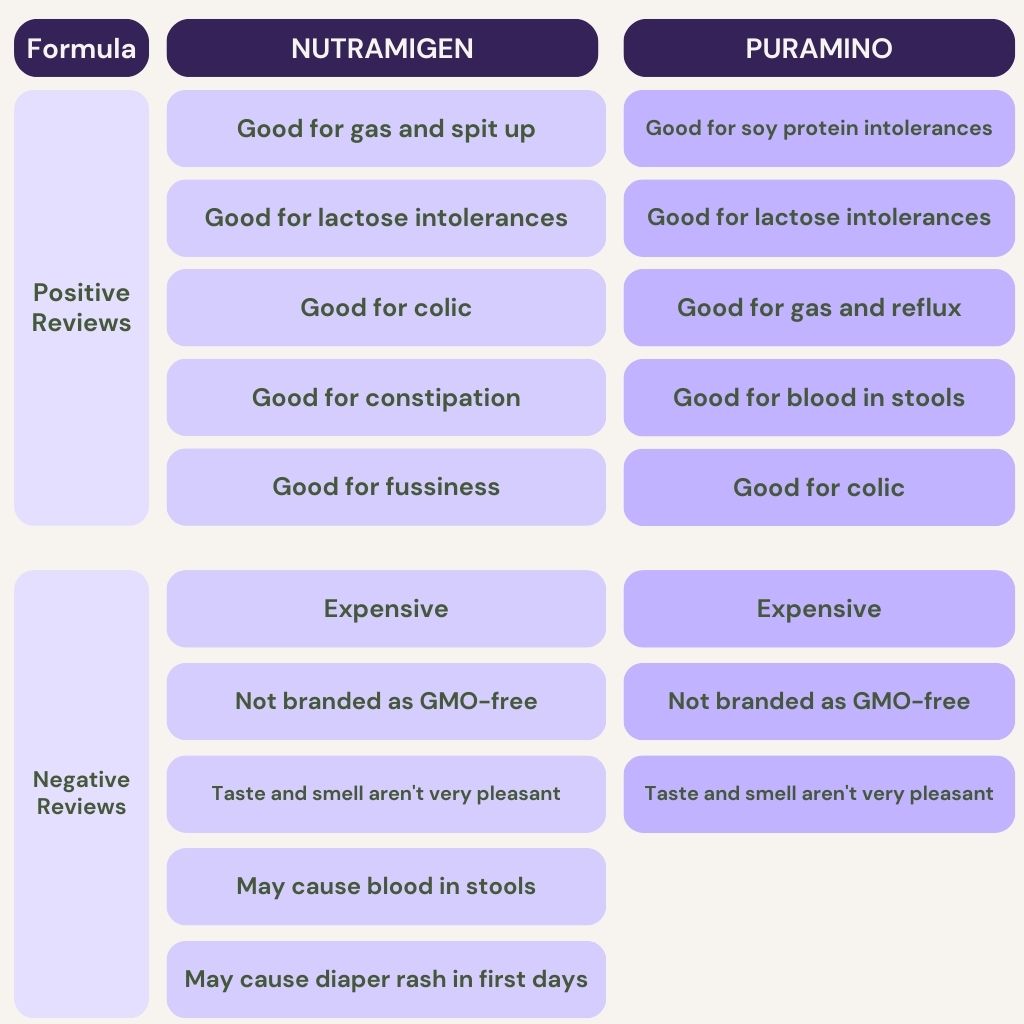
According to Mom’s reviews, both formulas are showing good results in relieving gas, reflux, and colic. But, Puramino can fix also the blood in stools problem caused sometimes by Nutramigen, whereas this last is good also for constipation and fussiness.
Both formulas are expensive and not branded as GMO-Free. Furthermore, the taste and smell are horrible.
Babies on Nutramigen can have diaper rash in the first days, but it disappears within a few days.
Related: Neocate Vs Nutramigen: Mom’s Reviews, Ingredients, and Prices
Ingredients Comparison:
Protein Source:
Nutramigen is primarily a hypoallergenic formula that derives its protein source from extensively hydrolyzed cow’s milk. The proteins in cow’s milk are broken down into smaller fragments through a process called hydrolysis. This breaking down of proteins into smaller components helps reduce the risk of triggering an allergic response in infants with cow’s milk protein allergy. Nutramigen is an excellent option for babies who exhibit sensitivity to regular cow’s milk-based formulas.
On the other hand, Puramino is an amino acid-based formula, making it one step further in terms of hypoallergenic compared to Nutramigen. Unlike Nutramigen, which still uses hydrolyzed cow’s milk protein, Puramino relies on amino acids as its protein source. Amino acids are the building blocks of proteins and are already broken down to the simplest form, leaving virtually no chance of allergic reactions. As a result, Puramino is typically recommended for infants with more severe allergies or intolerances to cow’s milk protein or soy.
Related: Alimentum RTF Vs Puramino: Mom’s Reviews – Ingredients – Prices
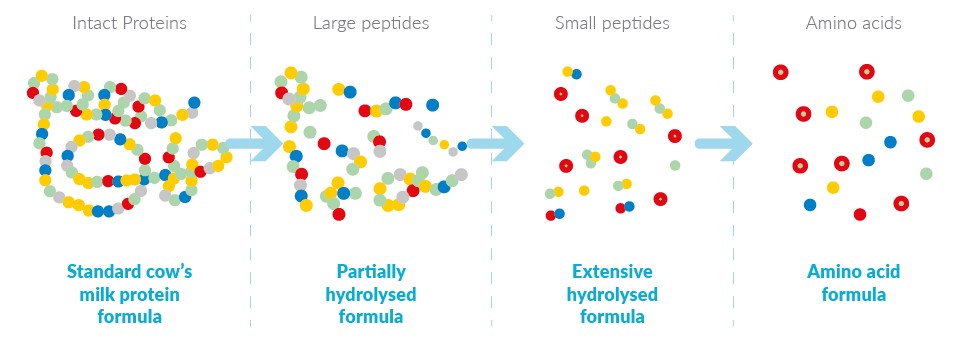
Carbohydrate Source:
Nutramigen’s carbohydrate source is primarily derived from corn syrup solids. Corn syrup solids are a common carbohydrate used in many infant formulas as they provide a source of easily digestible energy for babies. However, some infants with certain sensitivities may still experience mild reactions to corn-based ingredients, although it is less common compared to cow’s milk protein allergies. Nutramigen is a suitable option for babies with cow’s milk protein allergies who can tolerate corn-based carbohydrates.
In contrast, Puramino takes carbohydrate sourcing a step further to accommodate infants with extremely sensitive digestive systems. It has corn syrup solids and modified tapioca starch as its carbohydrate source. Tapioca starch is a gluten-free and easily digestible carbohydrate derived from the cassava root. Since tapioca is not commonly associated with allergens, Puramino becomes an ideal choice for babies with severe allergies or intolerances to cow’s milk protein and corn-based ingredients.
Fat Source:
The fat source in Nutramigen is primarily vegetable oil blends. These oils typically include options such as soybean oil, palm oil, and coconut oil. Vegetable oil blends are rich in essential fatty acids, such as omega-3 and omega-6, which are crucial for a baby’s brain and eye development. However, Nutramigen is not suitable for infants with soy or coconut allergies, and some parents may prefer to avoid palm oil due to sustainability concerns.
Puramino uses a different approach for its fat source. It relies on medium-chain triglycerides (MCT) oil, derived from coconut oil. MCT oil is unique because it contains medium-chain fatty acids that are more easily absorbed and digested by infants, especially those with digestive issues or malabsorption problems. Moreover, MCT oil is less likely to cause allergic reactions compared to long-chain triglycerides found in regular vegetable oils.
Related: Nutramigen Vs EleCare: Full Comparison (With Charts)
Probiotics:
Puramino doesn’t have a probiotic whereas Nutramigen has one called Lactobacillus rhamnosus (LGG) that supports a healthy digestive system by restoring and maintaining the balance of beneficial bacteria in the gut. This can aid in proper digestion, nutrient absorption, and overall gut health. Additionally, Lactobacillus rhamnosus has been studied for its potential to strengthen the immune system and reduce the risk of allergies in infants. Its inclusion in Nutramigen provides an extra layer of support for babies with sensitive digestive systems, helping to manage discomfort and promote overall well-being.
Related: What Does a Hypoallergenic Formula Poop Looks Like?
Nutrition Comparison:
Nutrients and Vitamins:

As the table above shows, Nutramigen and Puramino have the same nutrients and vitamin levels except for the fat level, the first one has 10.3g/100 cal while Puramino has 10.6g/100 cal. This similarity is due to both formulas being made by the same brand (Enfamil).
Minerals:

The same thing to mineral levels, Nutramigen and Puramino have the same mineral content except for Calcium and Phosphorus; they are abundant in Puramino.
Price and Size Comparison:
The table below shows the different sizes and prices of Nutramigen and Puramino:
| NUTRAMIGEN | PURAMINO |
|---|---|
| 40.23 $ 19.8 oz 2.03 /oz Buy HERE | 44.82 $ 14.1 oz 3.18 /oz Buy HERE |
| 12.12 $ 32 fl oz 37.9 ¢/fl oz Buy HERE | – |
Switching From Nutramigen to Puramino:
Is it Safe?
Yes, transitioning from Nutramigen to Puramino is considered safe and appropriate, particularly if your baby is experiencing adverse reactions to Nutramigen, such as the presence of blood in their stools. Many moms said that Puramino has solved this problem. In fact, if your baby didn’t do well on hypoallergenic formulas, the last choice you have is amino acid-based formulas like Puramino.
The unique composition of Puramino can alleviate discomfort and address the specific nutritional needs of babies with sensitive tummies, providing them with the essential nutrients they require for healthy growth and development.
However, before switching to an amino acid formula, try other hypoallergenic formulas like Gerber Extensive HA and Alimentum because they are less expensive.
Related: Nutramigen Vs Gerber Extensive HA: Which One is The Best?
How to Switch From Nutramigen to Puramino?
If you are considering switching from Nutramigen to Puramino, it’s important to do so gradually to allow your baby’s digestive system to adapt to the new formula. Here are some steps to help you make a smooth transition:
- Gradual Transition: Switching formula abruptly can cause digestive discomfort for some babies. To avoid this, introduce Puramino slowly. Start by mixing a small amount of Puramino formula with your baby’s current Nutramigen formula. For the first few days, use a ratio of about 25% Puramino to 75% Nutramigen.
- Monitor Your Baby’s Response: During the transition period, closely observe your baby for any signs of allergies or digestive issues. If your baby tolerates the mixed formula well and shows no adverse reactions, gradually increase the amount of Puramino while reducing the Nutramigen proportion.
- Full Transition: Over the course of about one to two weeks, continue adjusting the ratio until you have completely replaced Nutramigen with Puramino. By the end of this period, your baby should be consuming Puramino exclusively.
- Be Patient and Flexible: Some babies may adjust quickly to the new formula, while others may take more time. Be patient and flexible during the transition process, and be prepared to go back to your pediatrician for any concerns or adjustments if needed.
- Follow Feeding Guidelines: Always follow the recommended feeding guidelines provided on the Puramino formula packaging. The guidelines may differ from Nutramigen due to variations in nutrient content.
- Keep Your Pediatrician Informed: Throughout the transition and beyond, keep your pediatrician informed about your baby’s progress. They can offer guidance and ensure that your baby is receiving the appropriate nutrition.
Related: Nutramigen Vs Alfamino: Mom’s Reviews, Ingredients, and Prices
